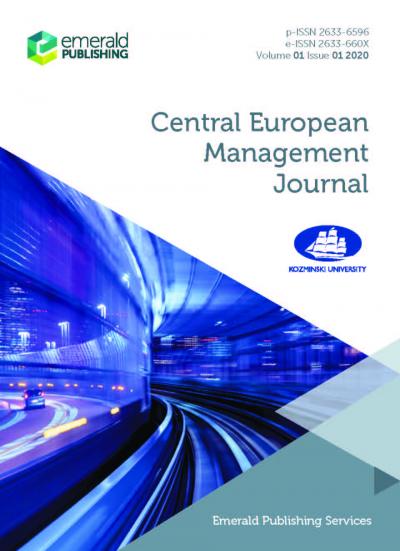The Application of Digitalization in Enterprises on the Basis of Multiple Criteria Selection Design
Yuliia Vorzhakova
Institute of Industrial Economics of National Academy of Sciences of Ukraine National Technical University of Ukraine – Igor Sikorsky Kyiv Polytechnic Institute

Kateryna Boiarynova
National Technical University of Ukraine – Igor Sikorsky Kyiv Polytechnic Institute

11.2020 28 (3) Central European Management Journal
DOI 10.7206/cemj.2658-0845.29








